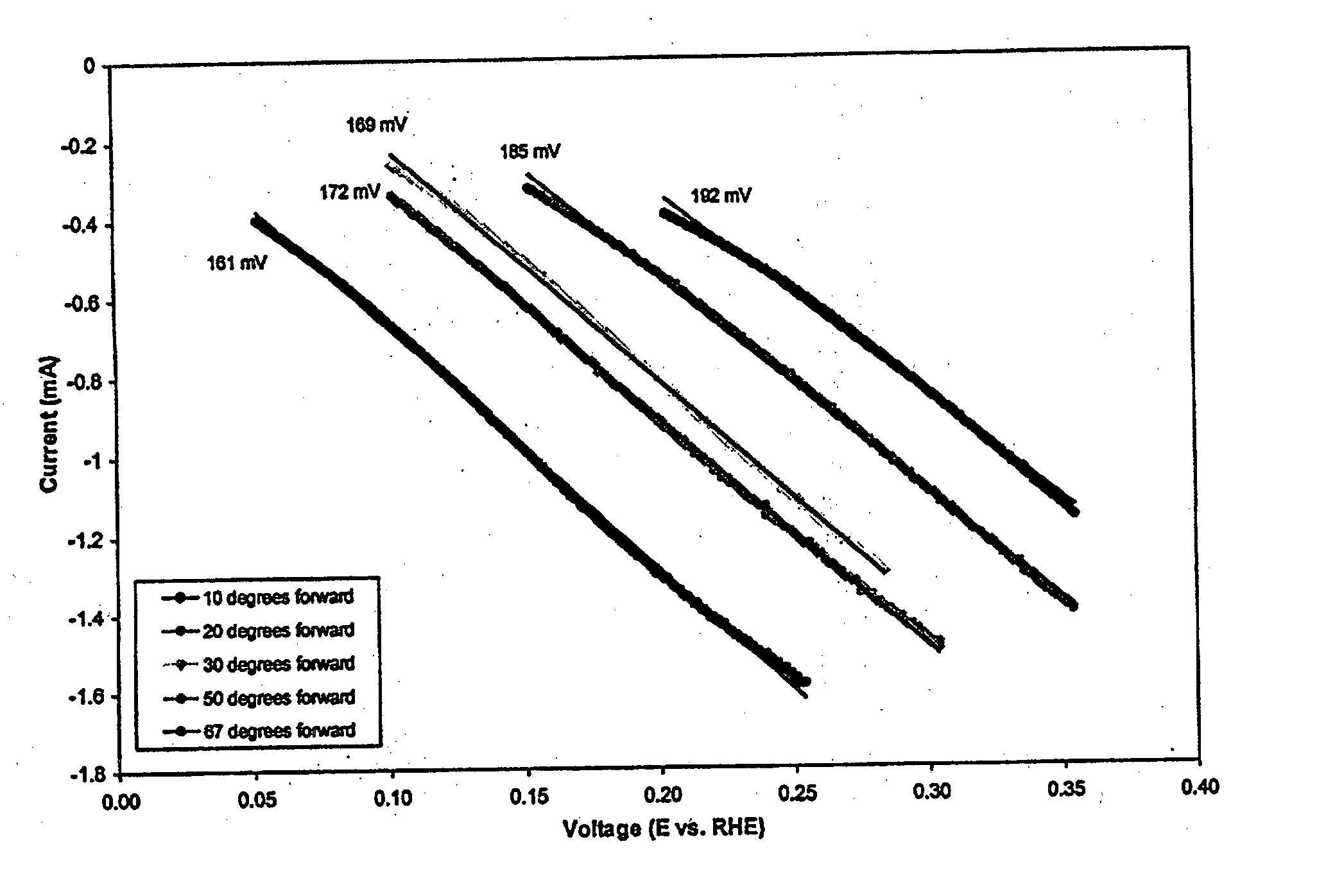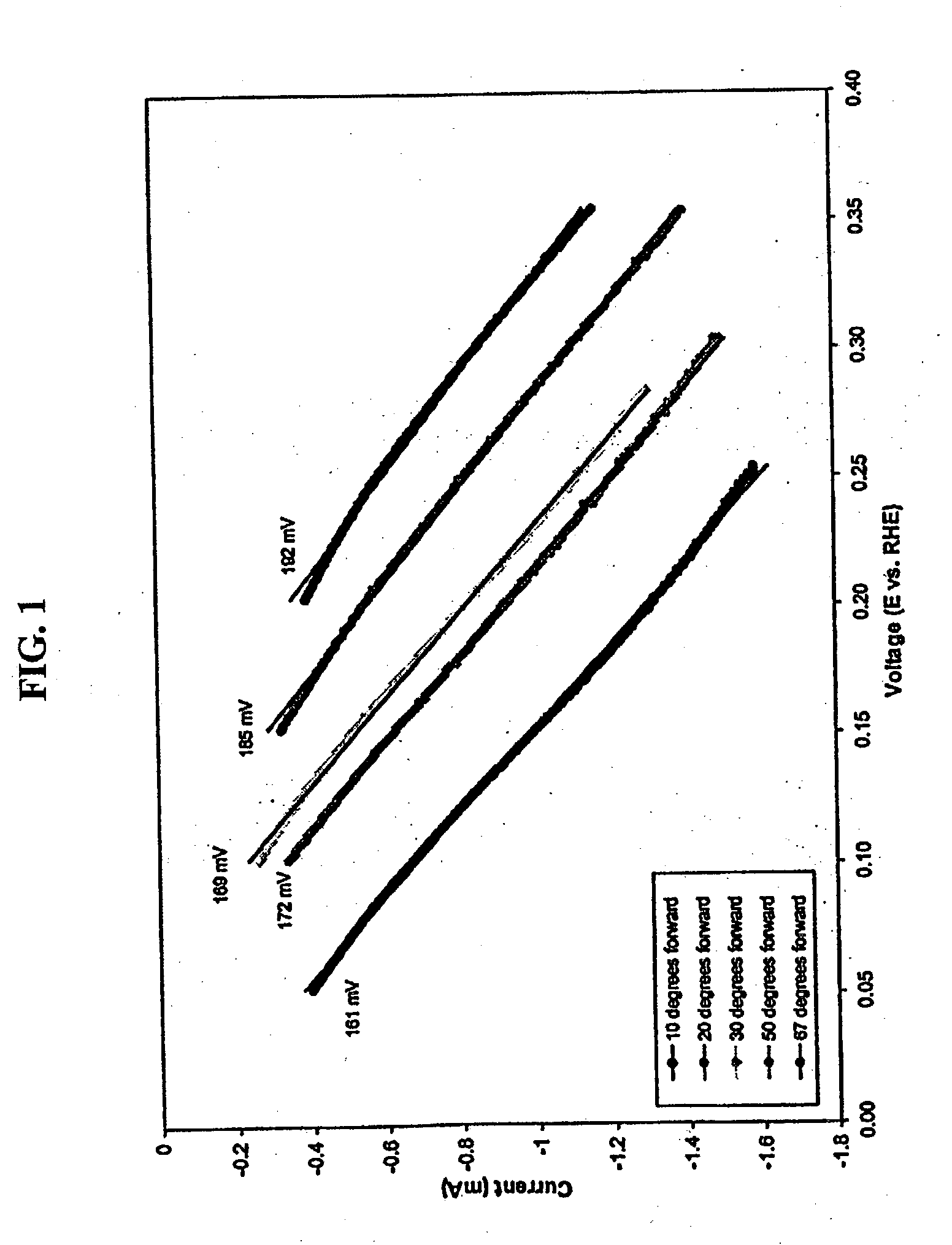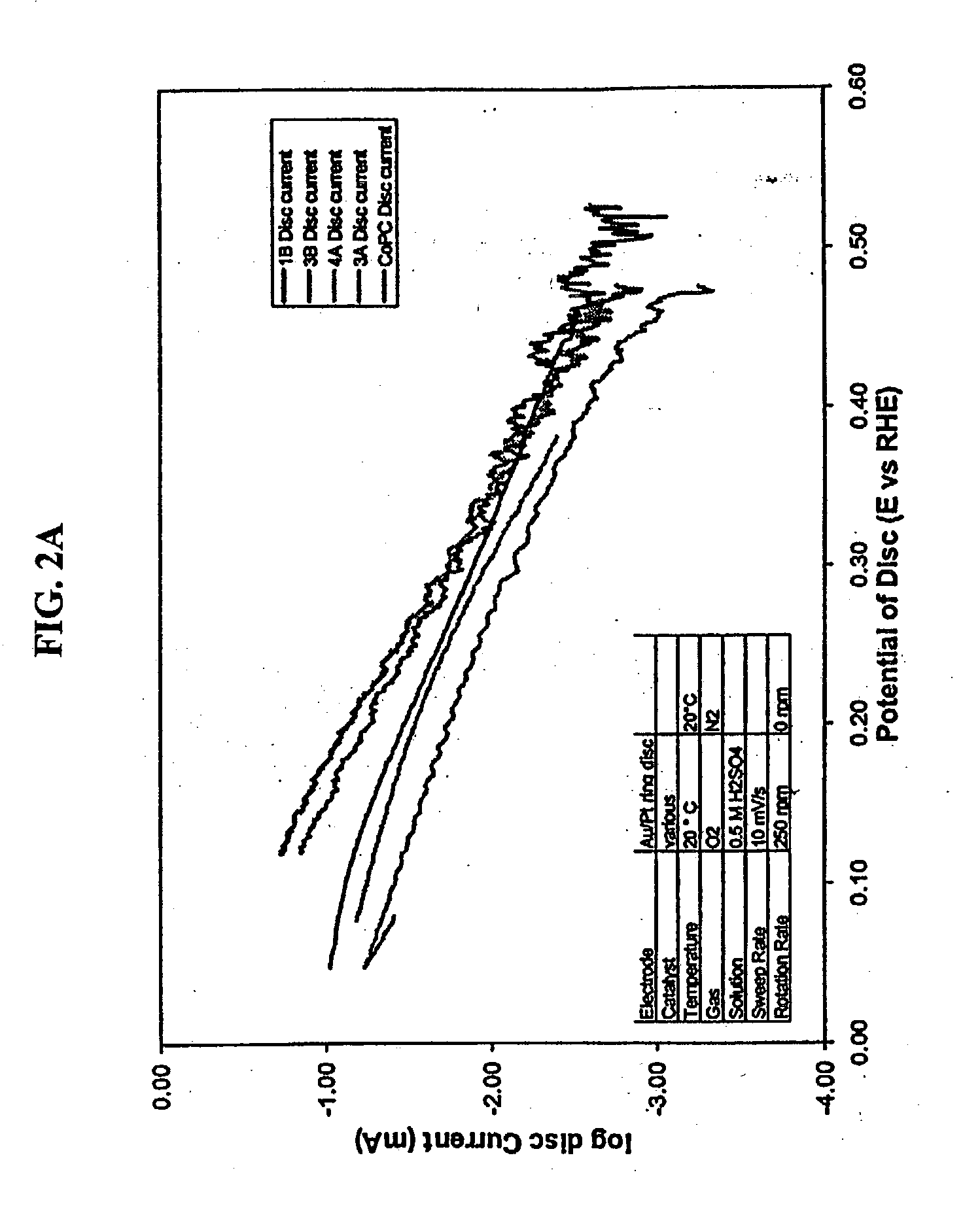Oxygen reduction catalyst
- Summary
- Abstract
- Description
- Claims
- Application Information
AI Technical Summary
Benefits of technology
Problems solved by technology
Method used
Image
Examples
example 1
[0032] Catalyst Preparation using a Sol-Gel
[0033] 4.4 g Co(NO.sub.3)2.multidot.6H.sub.2O or CoCl.sub.2.multidot.6H.su-b.2O was dissolved in 15 mL absolute ethanol and refluxed (74.degree. C.) for 6 hours followed by 18 hours of stirring at room temperature. 15 mL ethyl acetate and 1000 ppm non-ionic surfactant were added to create a ready to use 0.5 M sol. The solution is then brought back to reflux and between about 2 to about 3 molar equivalents of ethylene diamine diluted in 1:1 ethanol:ethyl acetate (v:v) was added dropwise over 1 to 5 days to the refluxing stirring solution. The resulting sol-gel derived catalyst solution was allowed to cool to room temperature and saved.
[0034] In a similar method, an alternative sol-gel derived catalyst was prepared using 2 to 3 molar equivalents of 1,2 phenylene diamine diluted in ethanol:ethyl acetate, added dropwise over 2 to 3 days to the refluxing stirring solution.
example 2
[0035] Catalyst Preparation using cobalt ethylene diamine dichloride (both cis and trans)
[0036] Cis- and trans-Co(En).sub.2Cl.sub.2 were separately reacted with two equivalents of NaOEt (OK abbreviation?) in ethanol. Neither the green trans-Co(En).sub.2Cl.sub.2 or the purple cis-Co(En).sub.2Cl.sub.2 were soluble in ethanol, so it was added as a solid, along with the NaOEt. After refluxing for 12 hours and stirring for 18 hours at room temperature, a red solution and a brownish precipitate were obtained. The supernatant was recovered by filtration and saved.
example 3
[0037] Catalyst Preparation using a cobalt salt Solution
[0038] One molar equivalent of ethylene diamine was added over 2 hours to a stirred aqueous solution of 0.5 M Co(NO.sub.3).sub.2. Evaporation of the solution gave a red glassy gel. The gel was redissolved in distilled water to provide a catalyst solution.
PUM
| Property | Measurement | Unit |
|---|---|---|
| Angle | aaaaa | aaaaa |
| Angle | aaaaa | aaaaa |
| Fraction | aaaaa | aaaaa |
Abstract
Description
Claims
Application Information
 Login to View More
Login to View More - R&D
- Intellectual Property
- Life Sciences
- Materials
- Tech Scout
- Unparalleled Data Quality
- Higher Quality Content
- 60% Fewer Hallucinations
Browse by: Latest US Patents, China's latest patents, Technical Efficacy Thesaurus, Application Domain, Technology Topic, Popular Technical Reports.
© 2025 PatSnap. All rights reserved.Legal|Privacy policy|Modern Slavery Act Transparency Statement|Sitemap|About US| Contact US: help@patsnap.com



